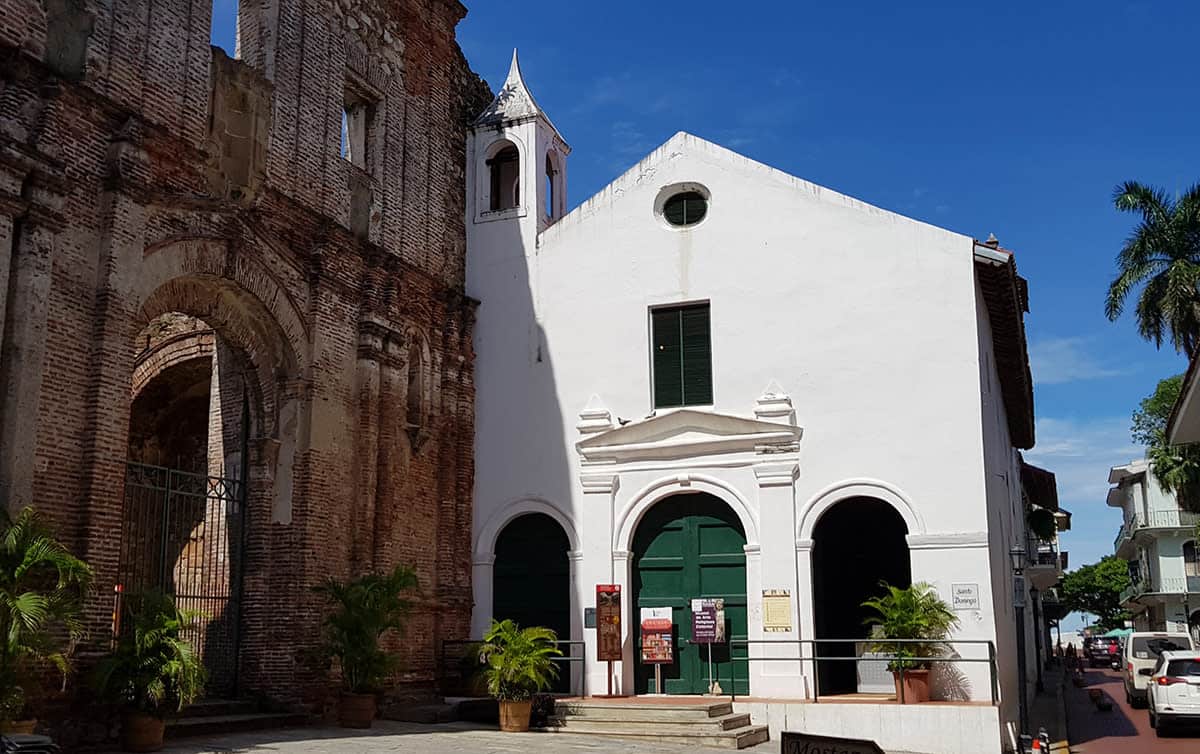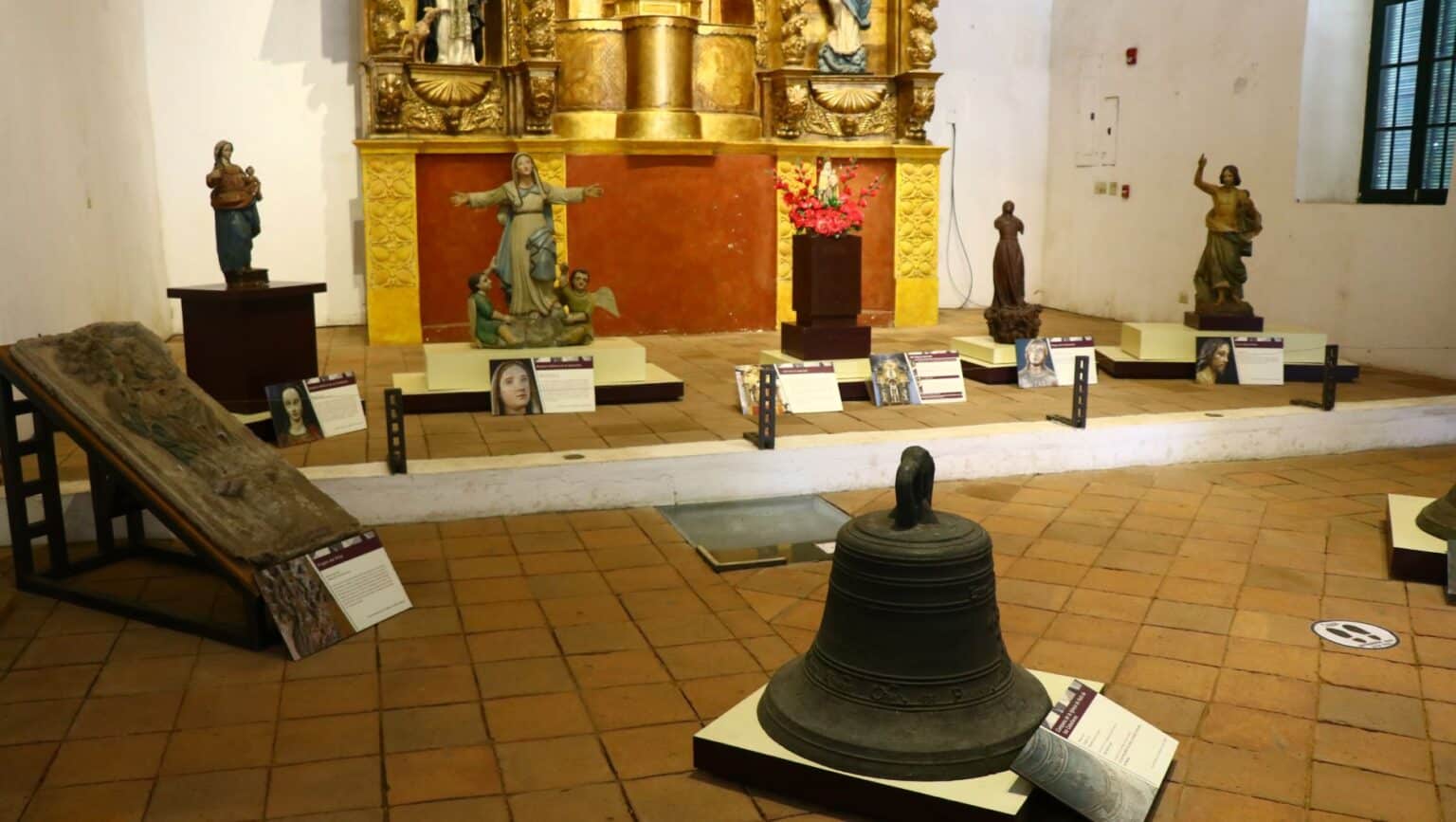Colonial Religious Art Museum makes sense in a neighborhood with seven churches. You can find this small museum next to the Santo Domingo Convent on Avenida A with Calle 3. The Santo Domingo Convent is one of the most iconic buildings in the Old Town of Panama. This building was built in 1678 and was the victim of two fires in the 17th century that collapsed its tower and interiors. That is why you can only see its shell.

After Panama’s independence from Spain, the building ceased to belong to the church and was used in the 19th century as public baths, a bakery, a carpentry workshop, and other businesses. The famous “flat arch” of the Santo Domingo Convent was one of the tests studied by the engineers for the works of the Panama Canal, since it itself was built in an anti-seismic way.
Chapel of Santo Domingo de Guzman
The Chapel of Santo Domingo de Guzman was restored in 1974 to be inaugurated as the Colonial Religious Art Museum on December 22. It was closed and restored again in 2013, when it reopened on October 10. Near the main altar you can see part of the original floor that is covered by glass for protection.
The Colonial Religious Art Museum is located inside the Santo Domingo de Guzman Chapel, which is located next to the Santo Domingo Convent. This chapel was built in the 18th century when the old Panama City had residents of Spanish and Creole descent. This museum exhibits part of the heritage accumulated by the church and the richest families of the era.
Colonial Religious Art Museum
Some of the works were made in Spain, while others come from artisan workshops in Quito, Ecuador, or Lima, Peru. Visitors will appreciate the influences of South American art on the isthmus. The conquests of these countries started from Panama and returned through the isthmus to take the treasures back to Spain. In the 16th and 17th centuries, some of these artists moved to Panama and used the isthmus to sell their art and liturgical objects.
The museum exhibits wooden sculptures, paintings and silverware related to the 16th, 17th and 18th centuries and the first two decades of the 19th century. It has more than 200 works of Baroque art from the 17th and 18th centuries. Its altar is covered with gold made in the Baroque style. There are also various bells, some were in churches, dating back to the 16th century.

Those who want to visit the Colonial Religious Art Museum can go from Tuesday to Friday from 9:00 a.m. to 5:00 p.m. Saturdays and Sundays from 10:00 a.m. to 6:00 p.m. The museum is closed on Monday. The entrance fee is very cheap, only $1 for adults, .25 for children and .75 for students. This museum is under the administration of the Ministry of Culture of Panama. Stay in a hotel in Casco Viejo to see all the museums of the colonial neighborhood.